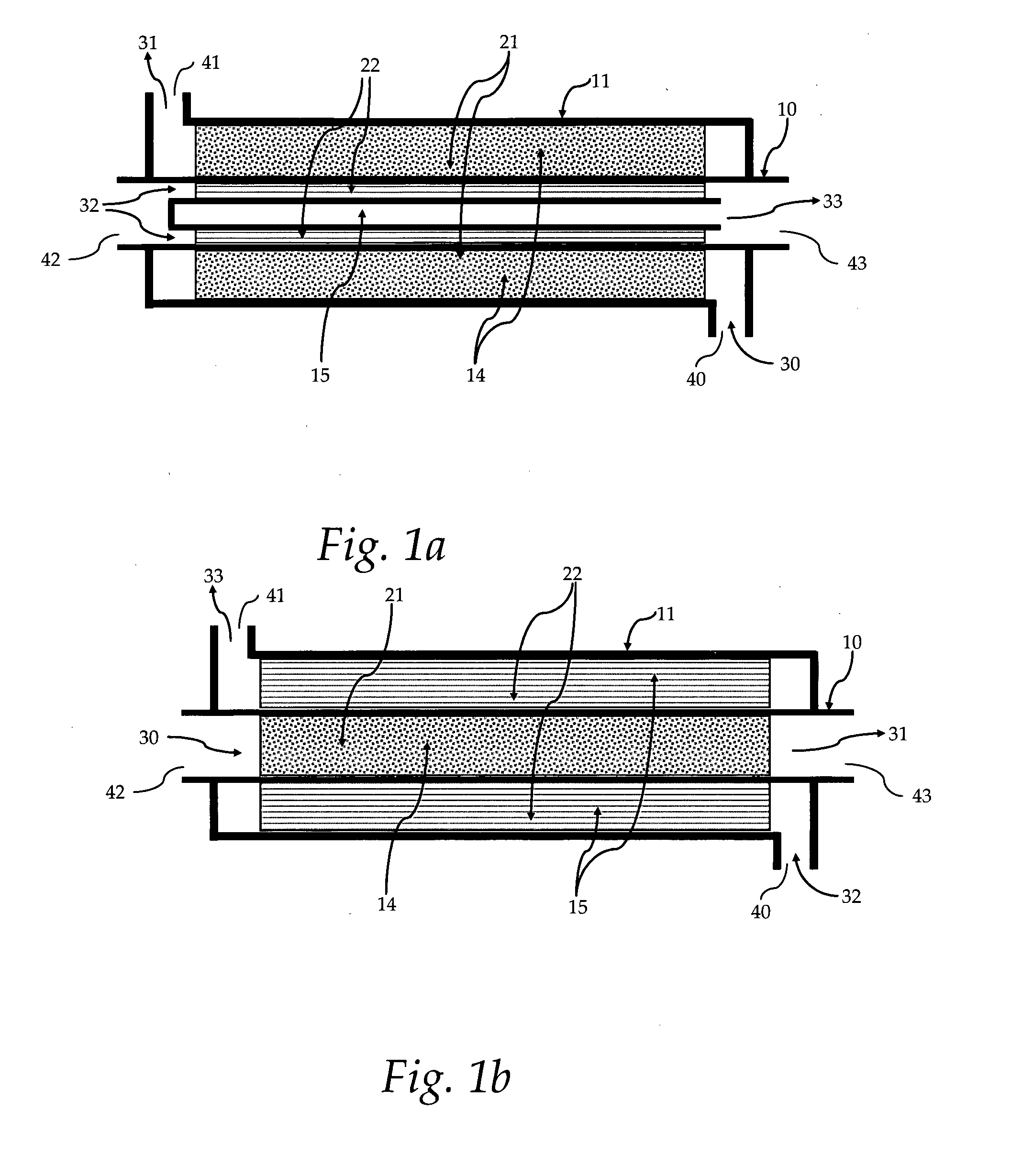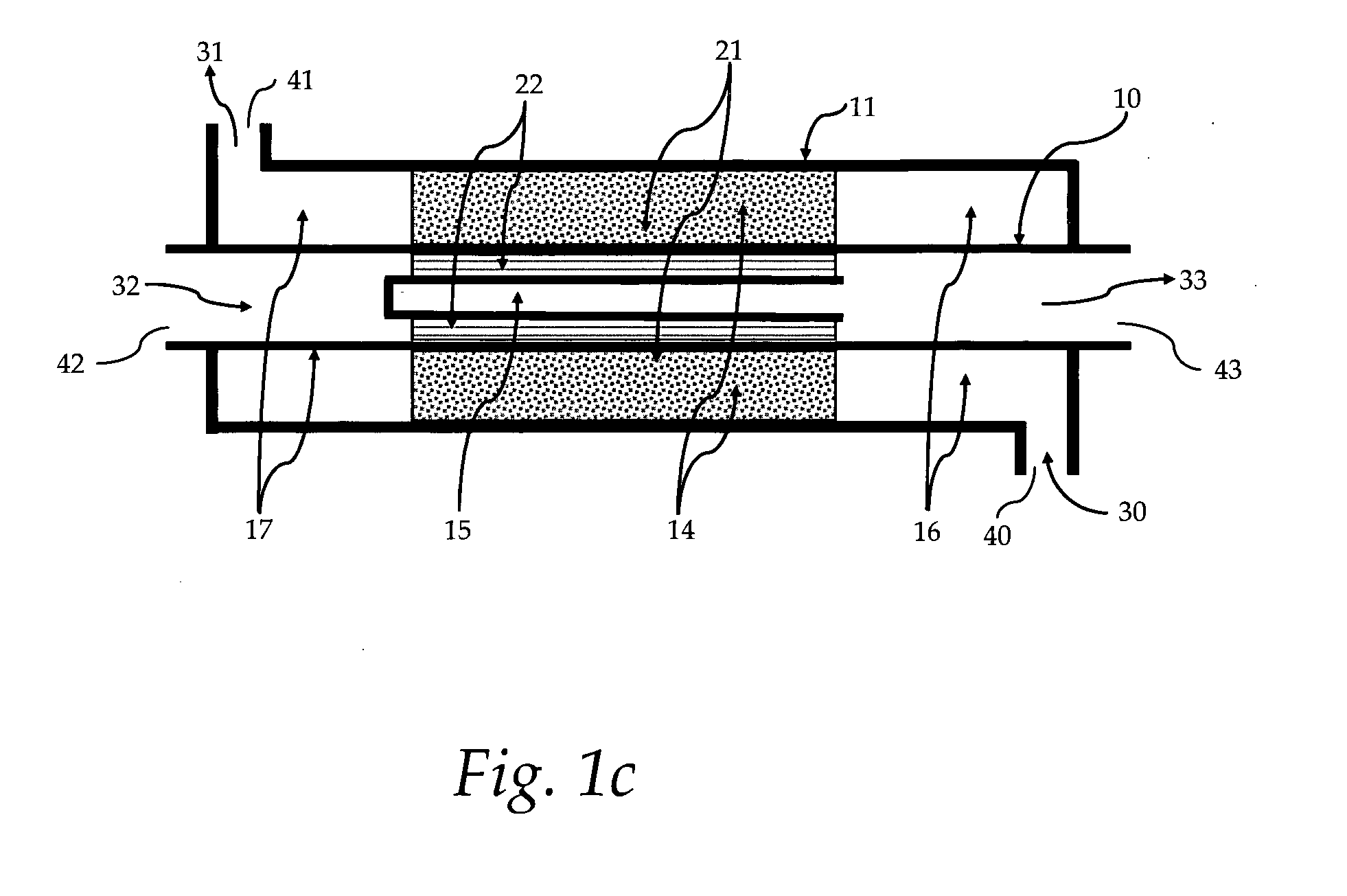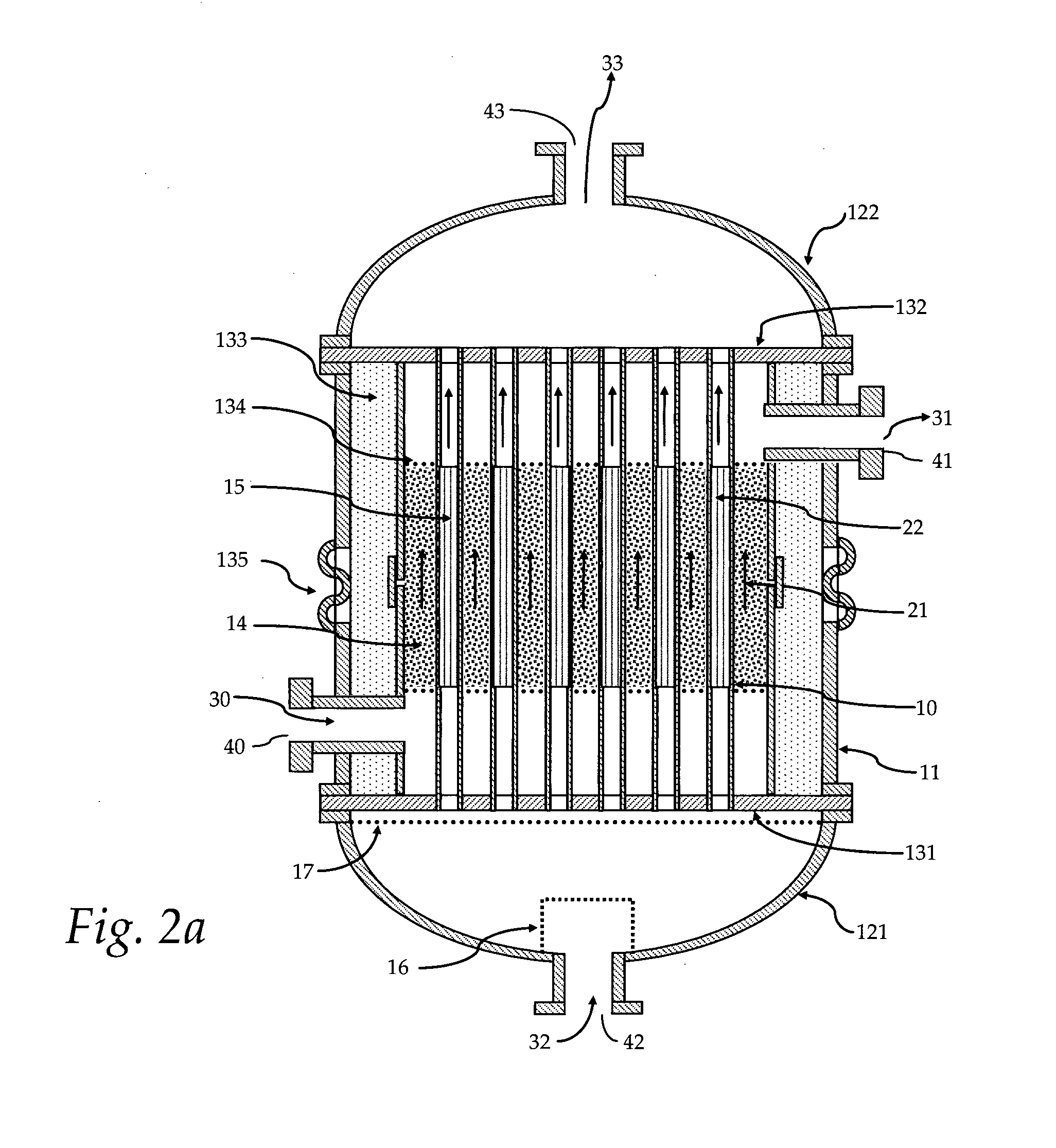Heat integrated reformer with catalytic combustion for hydrogen production
a hydrogen production and catalyst technology, applied in the direction of energy input, chemical/physical/physicochemical processes, bulk chemical production, etc., can solve the problems of increasing resource consumption and cost, inefficient transportation, and inability to easily downscale the technology of large-scale hydrogen production, so as to facilitate the introduction and distribution of fuel, facilitate the collection and exit of combustion products, and promote the effect of reformation reactions
- Summary
- Abstract
- Description
- Claims
- Application Information
AI Technical Summary
Benefits of technology
Problems solved by technology
Method used
Image
Examples
Embodiment Construction
[0028]The present invention is described in detail with reference to a few preferred embodiments illustrated in the accompanying drawings. The description presents numerous specific details included to provide a thorough understanding of the present invention. It will be apparent, however, to one skilled in the art that the present invention can be practiced without some or all of these specific details. On the other hand, well known process steps, procedures and structures are not described in detail as to not unnecessarily obscure the present invention.
[0029]FIG. 1A illustrates the heat integrated reformer according to one embodiment of the present invention. The integrated combustor / steam reformer assembly includes a tubular section defined by a cylindrical wall 10 that separates the combustion zone 15 from the reforming zone 14. The assembly housing 11 acts as the reactor wall and defines an axially extending concentric annular passage in heat transfer relation with the tubular ...
PUM
| Property | Measurement | Unit |
|---|---|---|
| surface area | aaaaa | aaaaa |
| heat | aaaaa | aaaaa |
| energy density | aaaaa | aaaaa |
Abstract
Description
Claims
Application Information
 Login to View More
Login to View More - R&D
- Intellectual Property
- Life Sciences
- Materials
- Tech Scout
- Unparalleled Data Quality
- Higher Quality Content
- 60% Fewer Hallucinations
Browse by: Latest US Patents, China's latest patents, Technical Efficacy Thesaurus, Application Domain, Technology Topic, Popular Technical Reports.
© 2025 PatSnap. All rights reserved.Legal|Privacy policy|Modern Slavery Act Transparency Statement|Sitemap|About US| Contact US: help@patsnap.com



